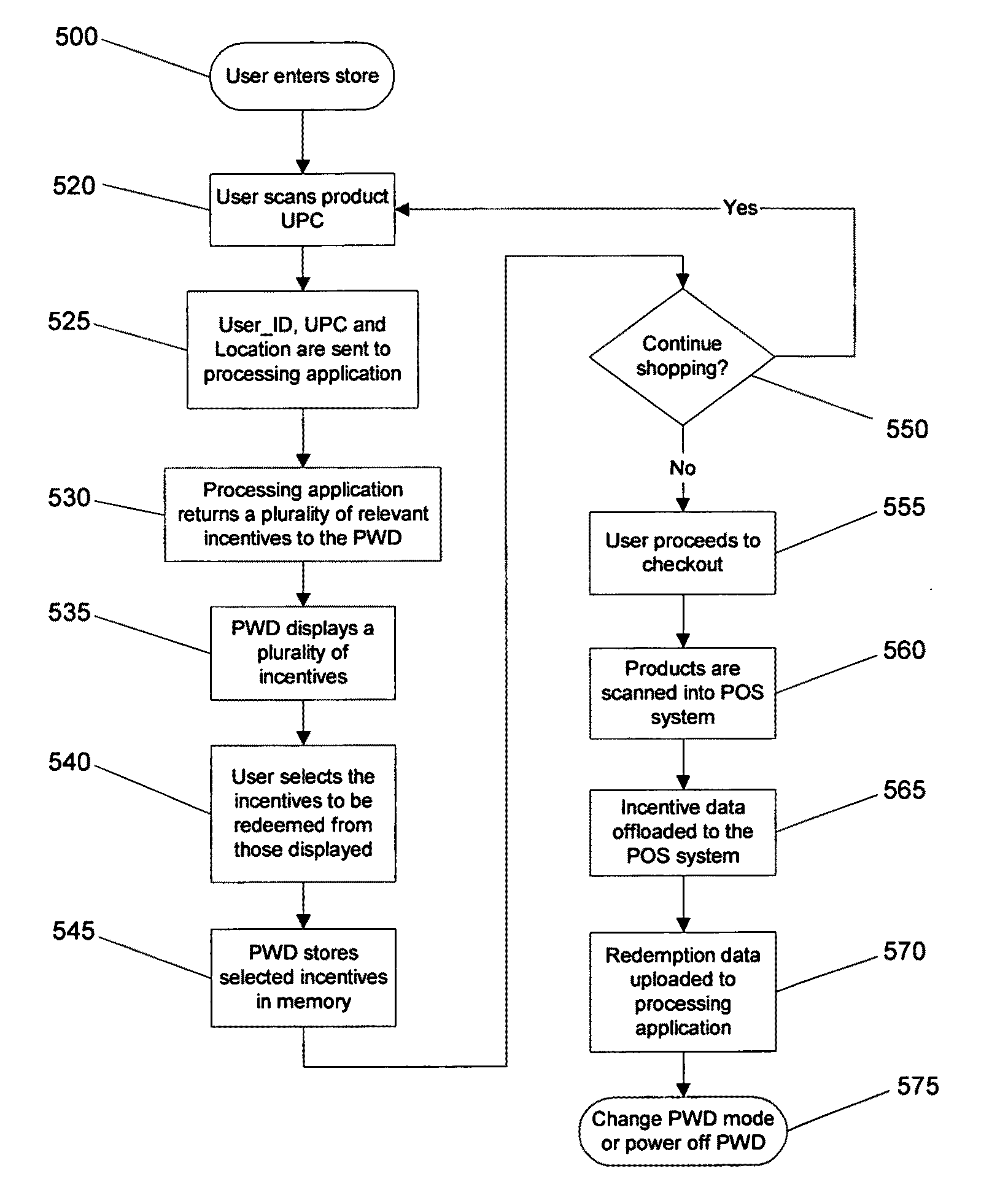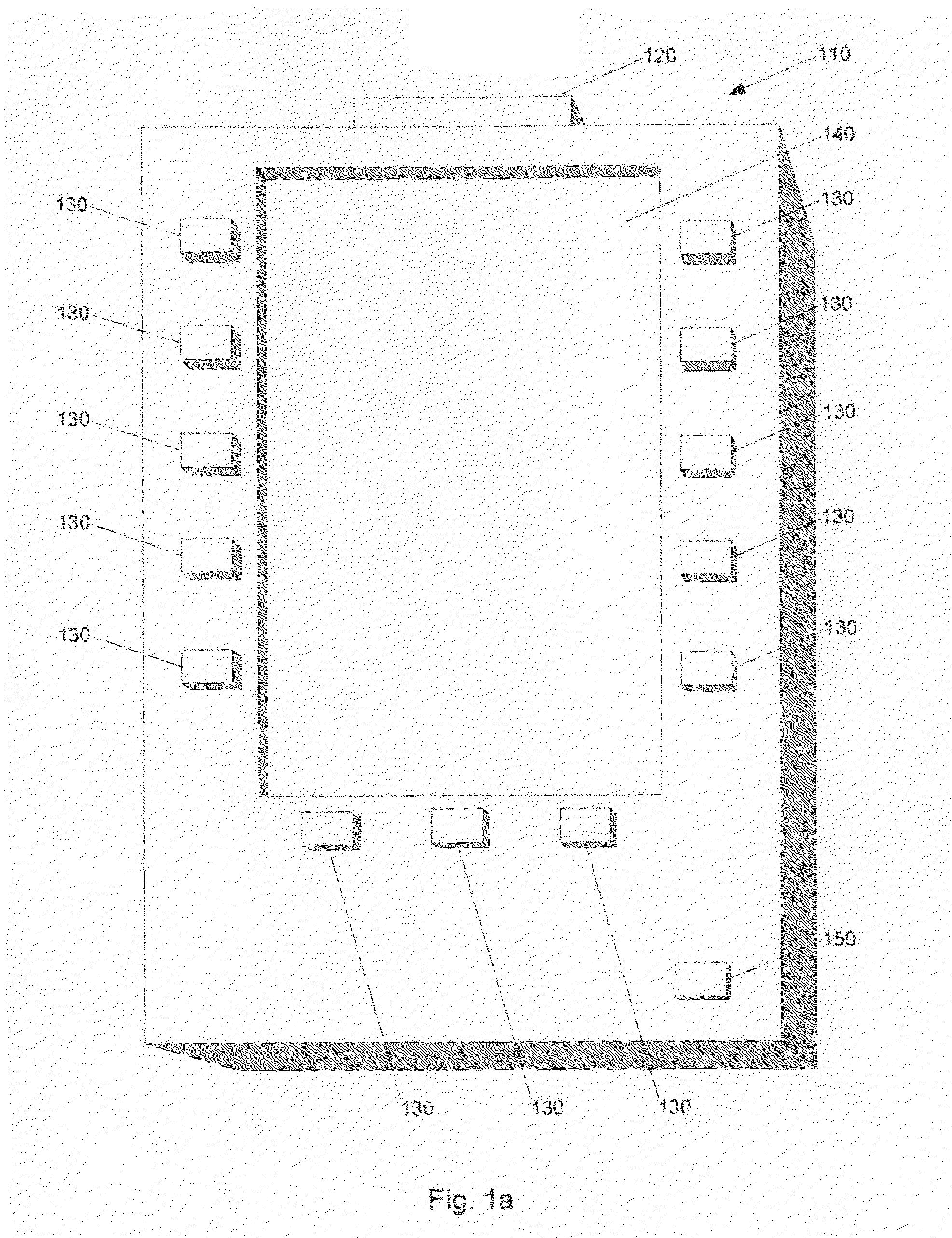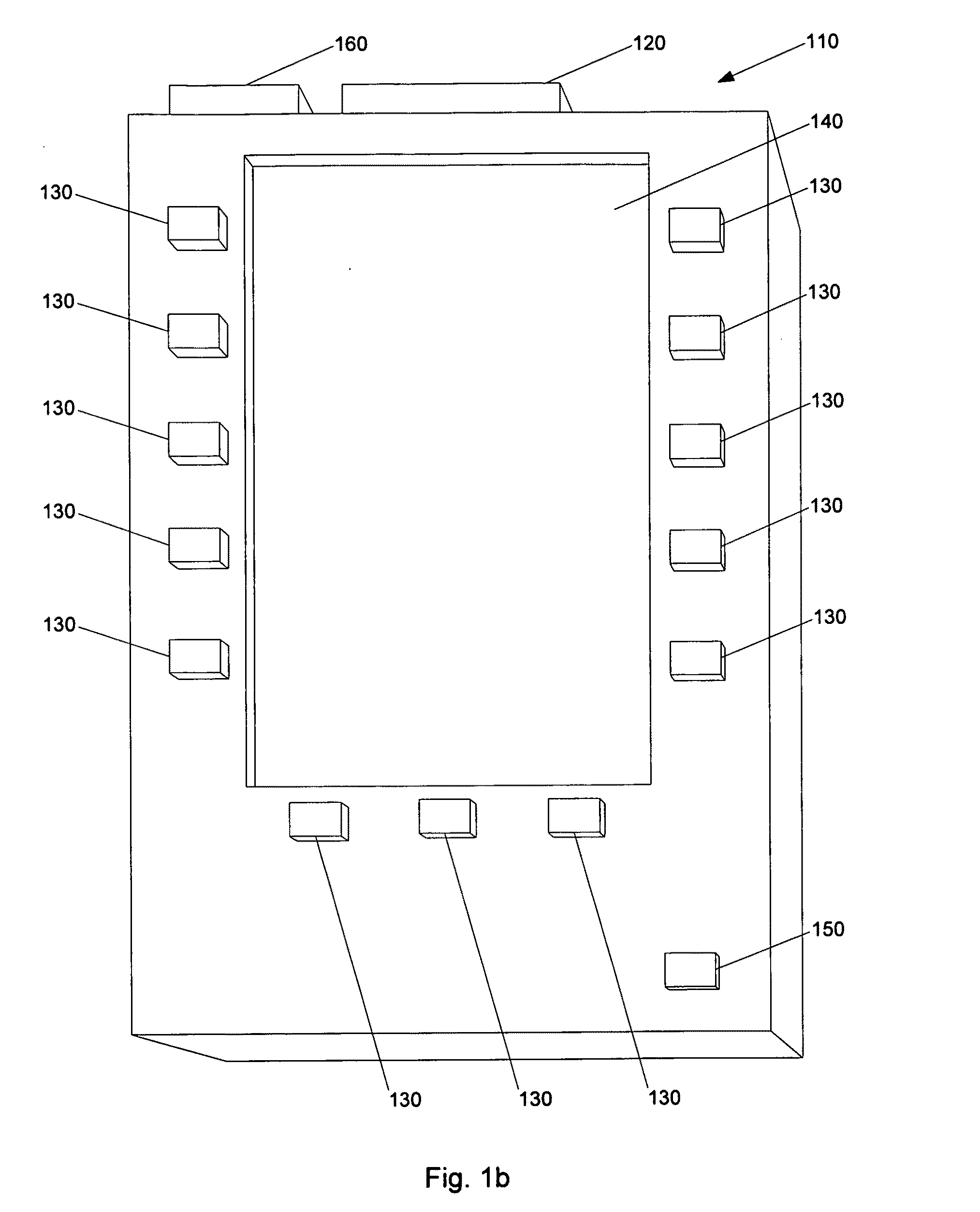Dynamic time-of-purchasing-decision incentive system and method
a technology of incentive system and time-of-purchasing decision, applied in the field of dynamic time-of-purchasingdecision incentive system and method, can solve the problems of prior art not being able to successfully overcome, existing process, and substantial costs incurred by suppliers to print and distribute discount coupons, so as to maximize the effect of incentive and reduce costs. the effect of the incentiv
- Summary
- Abstract
- Description
- Claims
- Application Information
AI Technical Summary
Benefits of technology
Problems solved by technology
Method used
Image
Examples
Embodiment Construction
[0042]With reference to FIG. 1a, in one preferred embodiment, a Personal Wireless Device (PWD) 110 according to the invention preferably comprises a hand-held unit having data acquisition means 120 and data communication means 312, 313 (shown in FIG. 3a). A PWD used in retail establishments is, for example, the Symbol Technologies' Portable Shopping System™ produced by Symbol Technologies, Inc., Holtsville, N.Y. Examples of other portable scanners are shown by U.S. Pat. Nos. 5,107,100, and 5,149,950 which are hereby incorporated herein by reference.
[0043]The PWD 110 preferably comprises at least a bar code reader 120 that is capable of acquiring data from machine readable codes such as Universal Product Code (UPC) bar codes, one dimensional bar codes, two dimensional bar codes, reduced space symbology, composite symbology, and other similarly machine-readable encoded information. The PWD also preferably comprises one or more buttons 130 that are selectively actuatable by a user. The...
PUM
 Login to View More
Login to View More Abstract
Description
Claims
Application Information
 Login to View More
Login to View More - R&D
- Intellectual Property
- Life Sciences
- Materials
- Tech Scout
- Unparalleled Data Quality
- Higher Quality Content
- 60% Fewer Hallucinations
Browse by: Latest US Patents, China's latest patents, Technical Efficacy Thesaurus, Application Domain, Technology Topic, Popular Technical Reports.
© 2025 PatSnap. All rights reserved.Legal|Privacy policy|Modern Slavery Act Transparency Statement|Sitemap|About US| Contact US: help@patsnap.com



